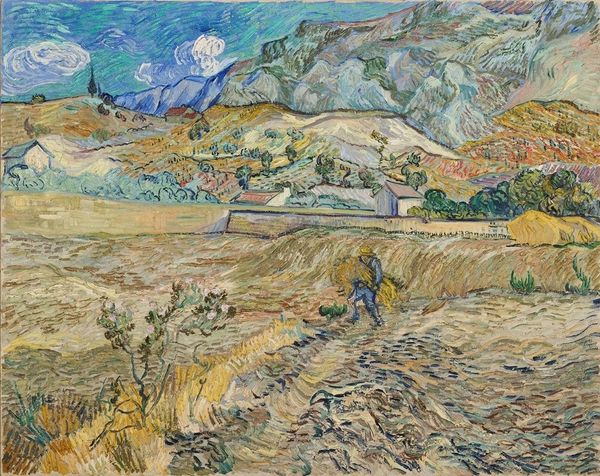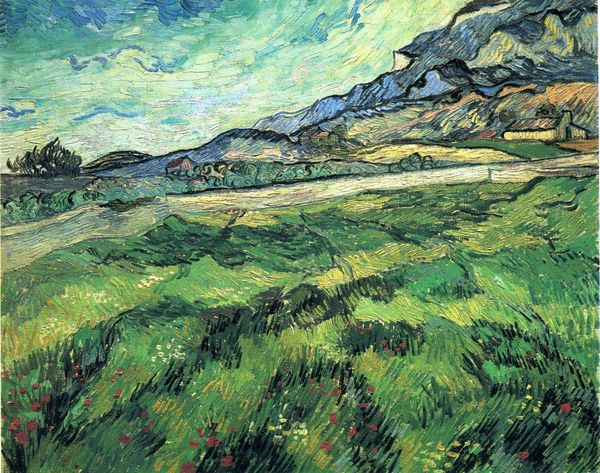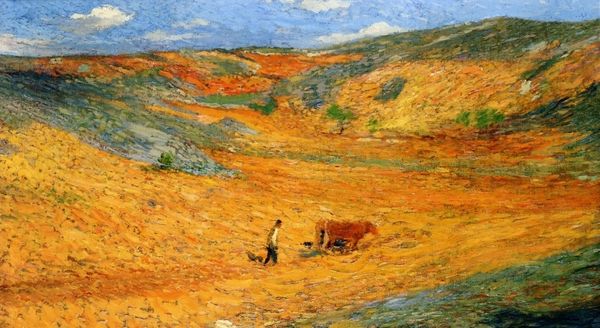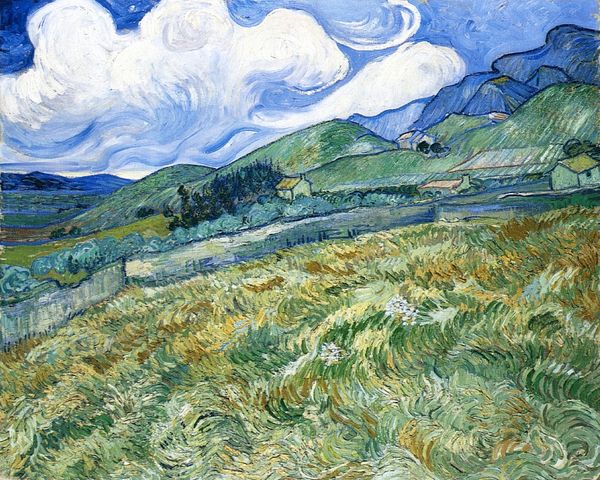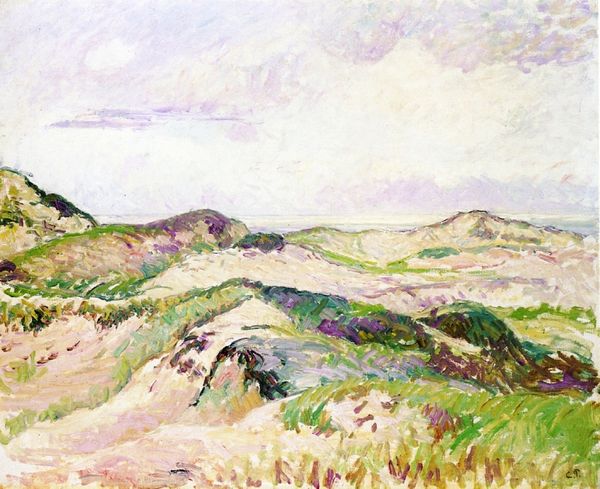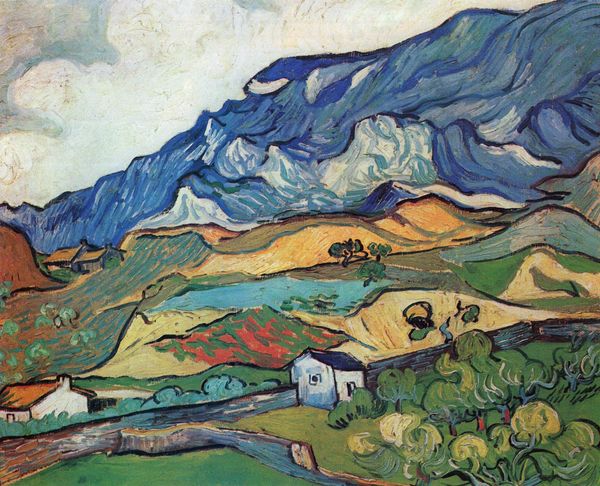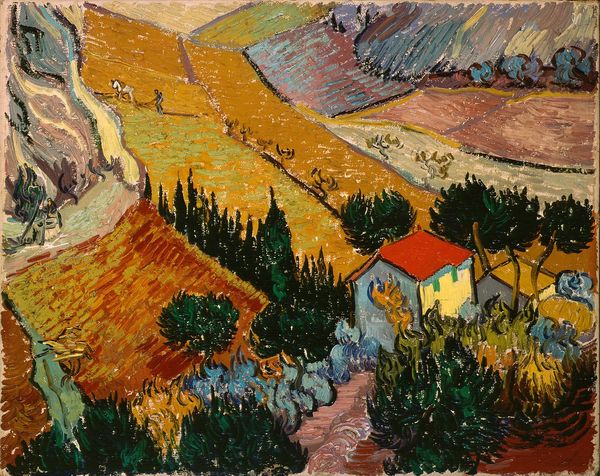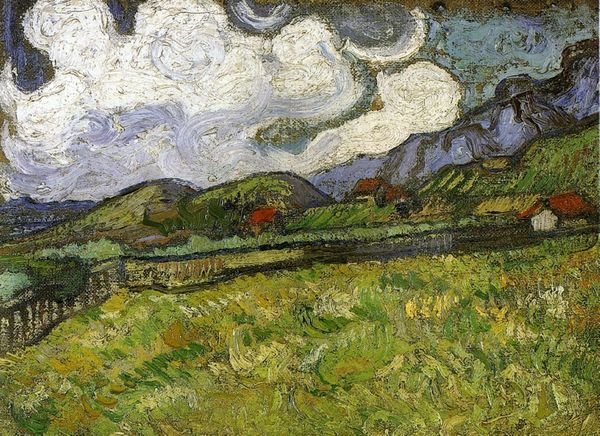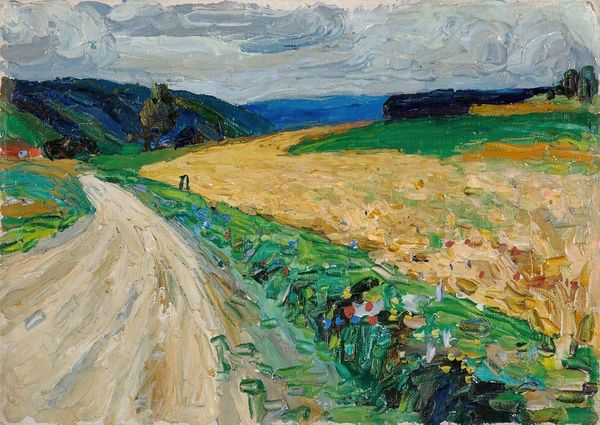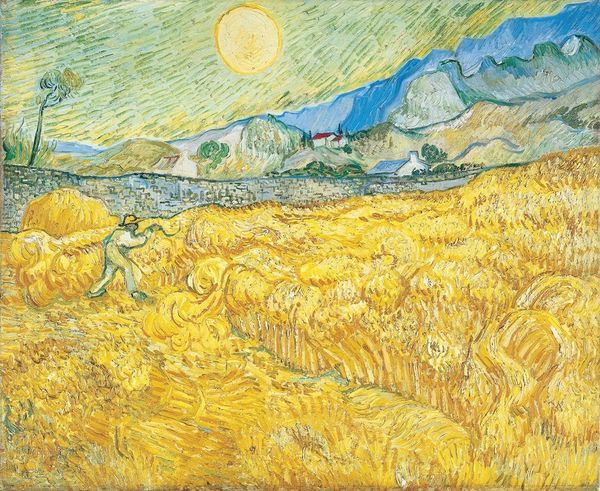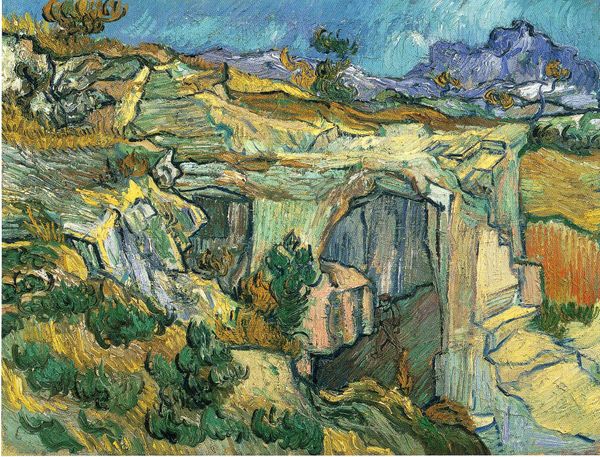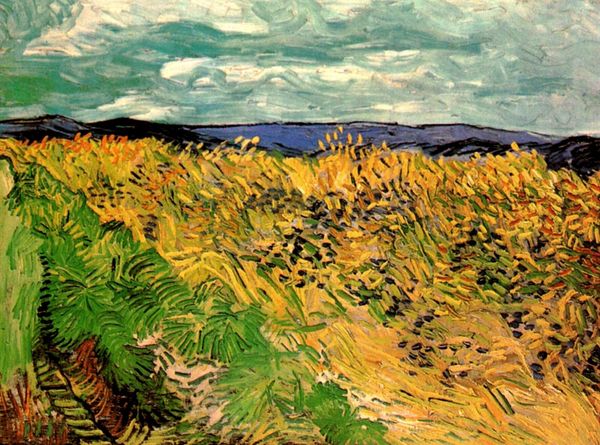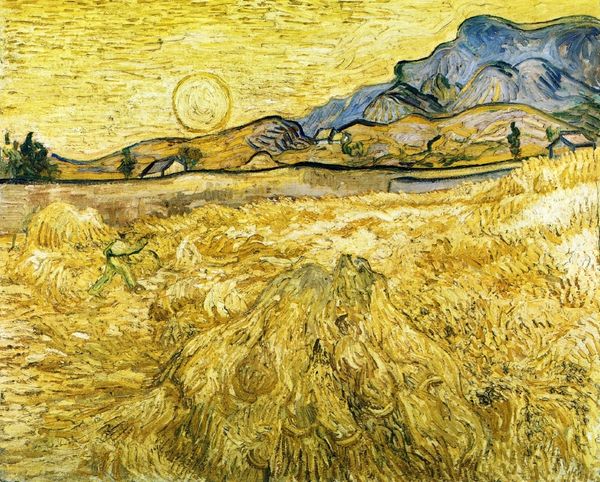
Copyright: Public Domain: Artvee
Editor: So, this is Van Gogh’s “Enclosed Field with Ploughman,” painted in 1889. The oil paint is really thick, creating a rough texture on the canvas. I immediately notice the way the golden field dominates the scene, but it feels almost claustrophobic because of the upward angle. What strikes you most about this piece? Curator: Claustrophobic, eh? I get that. For me, it’s the way he's wrestling with form, literally and figuratively, in this period. Those expressive, almost frantic brushstrokes – do they communicate peace and tranquility to you? It’s more like an emotional outpouring, a kind of visceral reaction to the landscape. It’s like he’s trying to contain, well, himself, within the frame! Notice how that small ploughman and team almost struggle within the landscape as it seems to rush upward? Editor: I see what you mean. The ploughman almost looks overwhelmed by the field. So is he using the landscape to reflect something about his inner state? Curator: Perhaps, wouldn’t you agree? There’s that fascinating detail of the distant windmill; does it bring you a sense of optimism or isolation? Maybe both, just like life itself, in a way? I often wonder if he saw it as a symbol of human endeavor, a machine working within nature. Van Gogh does ask so much of his audience, doesn't he? Editor: Absolutely, the windmill adds another layer. It’s like a symbol of hope but so small in comparison to everything else, the overwhelming nature. It’s all starting to make a lot more sense. Thank you. Curator: My pleasure! Always a journey worth undertaking!
Comments
No comments
Be the first to comment and join the conversation on the ultimate creative platform.
